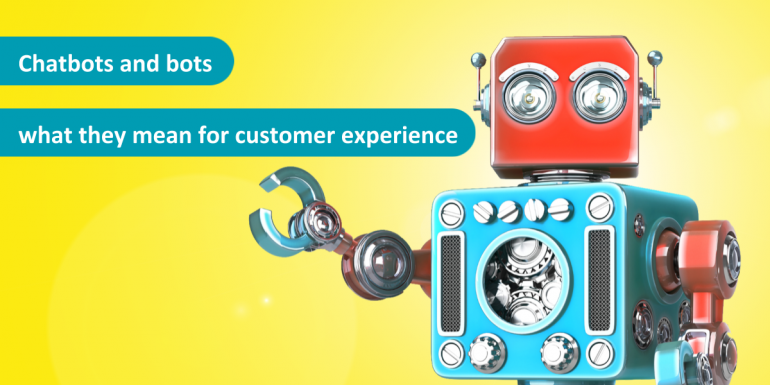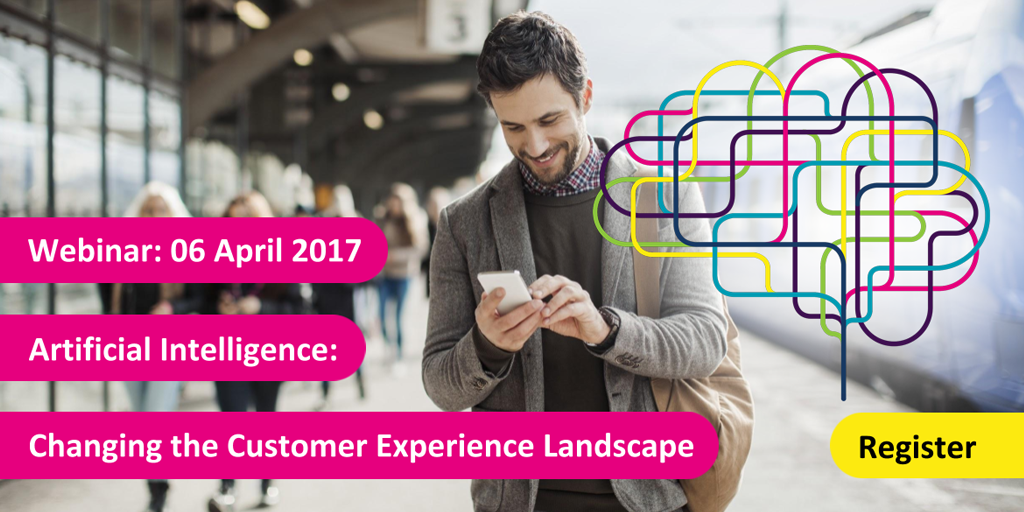Chatbots and bots - what they mean for customer experience

Talk of artificial intelligence and chatbots is currently everywhere in the customer experience market, with analysts, commentators and vendors all discussing the benefits that this type of technology can provide to brands and their customers. But what do the terms bot, chatbot and artificial intelligence actually mean – and how can they improve your customer experience?
To help everyone involved in CX, we’ve put together some definitions of the most common words, and how the concepts interrelate. There is a lot to cover so I’ve split the subject into three. This week I’ll define artificial intelligence itself and talk about the difference between bots and chatbots, then next week I’ll write about the types of artificial intelligence and finally some of the ways it can be incorporated into improving customer experience.
Let’s begin with artificial intelligence (AI) itself. Basically AI is human-like intelligence exhibited by machines, when they display cognitive functions such as understanding, learning and problem solving/reasoning. At Eptica, we think that the application of AI can transform customer experience.
The algorithm
When it comes to computing the start point for AI is the algorithm. Essentially an algorithm is a self-contained computer process that follows a set of rules and distinct steps, with a specific end point. This means it performs the process and then stops. Think of it as the building block of most computer programs, including those that are built on artificial intelligence. You can have a deterministic algorithm that always returns the same response or a probabilistic (non-deterministic) version that modifies its answers dependent on the environment around it.
Bots and chatbots
The last year has seen an explosion of interest in chatbots, but what are they, and what do they do? And how do they differ from bots, another term that you see used, sometimes interchangeably.
There is a difference. At its basic level a bot is simply an application that does automated tasks, made up of a set of algorithms. So every device we use has bots embedded within it, such as the pop up reminders in your smartphone calendar when a meeting is due. Bots are not new – for example Eptica has been developing them for many years. When it comes to customer experience bots are used to automate a variety of tasks – such as providing automatic answers through web self-service systems when a question is asked, to routing an incoming email to the best available person to answer it.
Chatbots are just versions of bots that are designed to be capable of having a conversation. That means they are able to understand an input (such as voice or text), process it and provide an answer in conversation. There has been a lot of discussion of chatbots recently, with Facebook making it easier for companies to create and deploy them on Facebook Messenger and WhatsApp. At the same time the likes of Apple’s Siri and Amazon’s Alexa are gaining traction with consumers as they are incorporated into smartphones and speakers. It is important to be clear that the chatbot is the underlying technology – voice or instant messaging is only the channel used to interact with it.
For a chatbot to work well it has to be able to follow the key artificial intelligence steps of understanding what it has been asked and then providing a relevant answer. And that means it has to use techniques such as natural language processing (which I’ll cover more next week) and have access to a comprehensive knowledge base full of the right information.
At Eptica we think that before brands start to invest in chatbots, they need to think about bots, and maximizing their use of them to drive customer experience transformation. They then need to ensure that they have everything in place to create a chatbot platform backed up by knowledge and understanding - otherwise the result will be frustrated customers that feel that their question has not been answered, leading to a breakdown in satisfaction and loyalty.
Next week I’ll go into more detail on the different types of artificial intelligence and how they can be applied to customer experience. If you have any comments in the meantime then don’t hesitate to leave them below.
We also invite you to join us for this webinar to find out how conversational & collaborative solutions powered by AI can enhance digital CX, enabling companies to put customer experience at the heart of their strategy and create value across all operations:








Comments